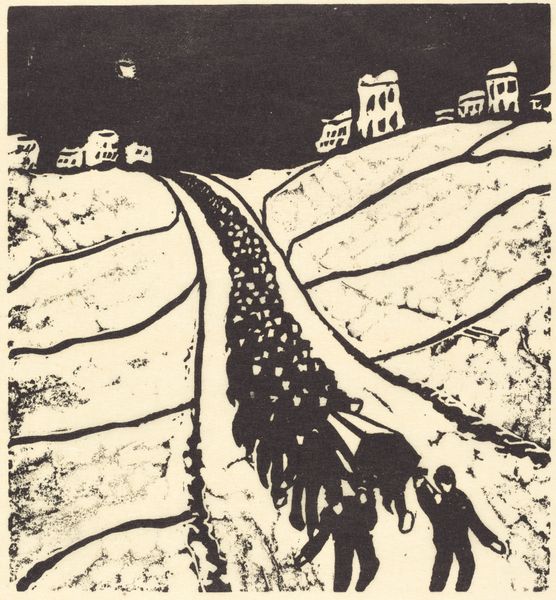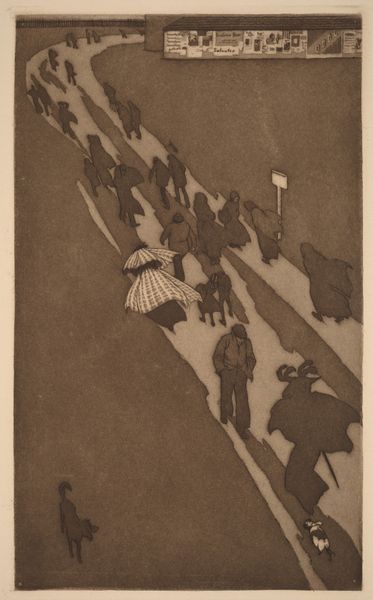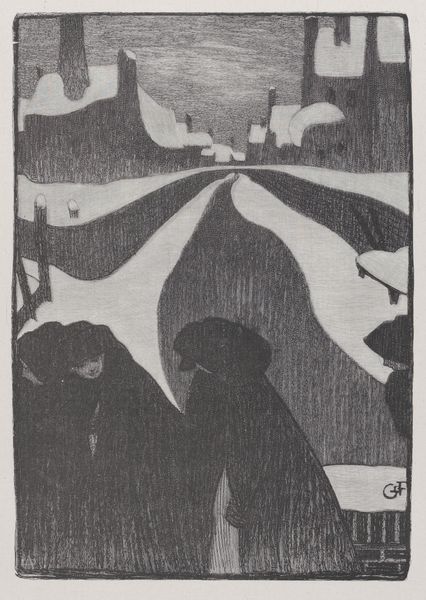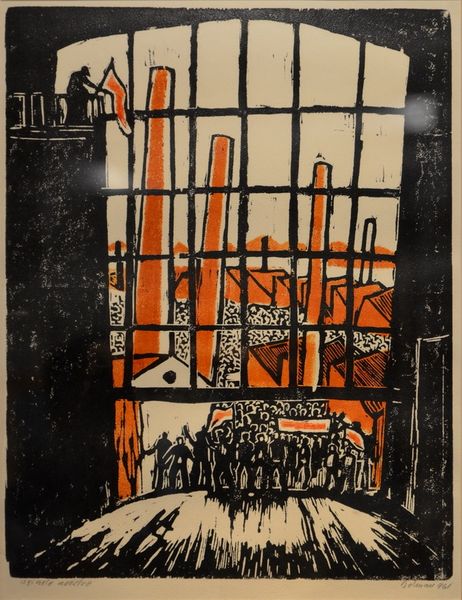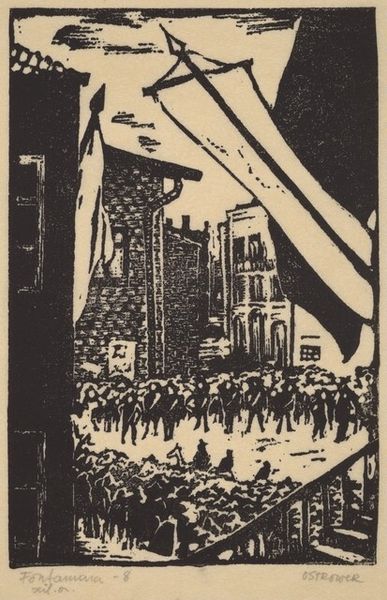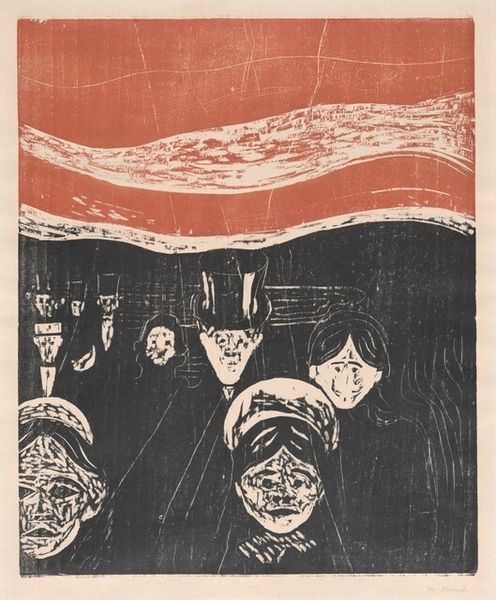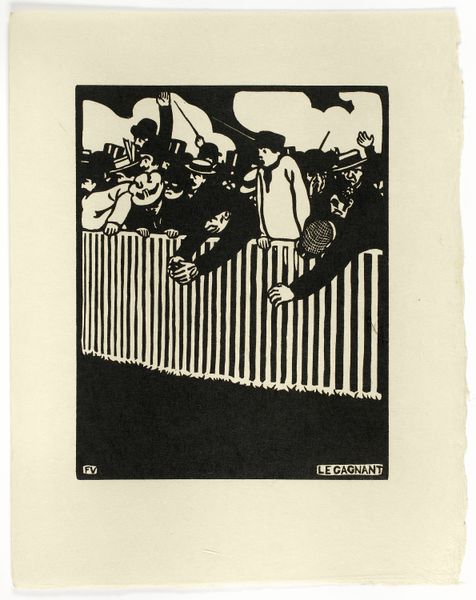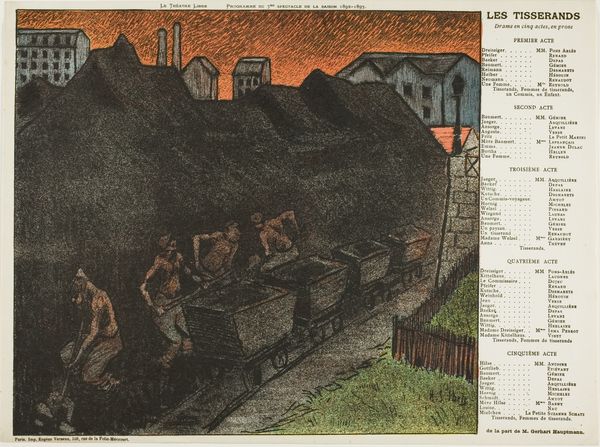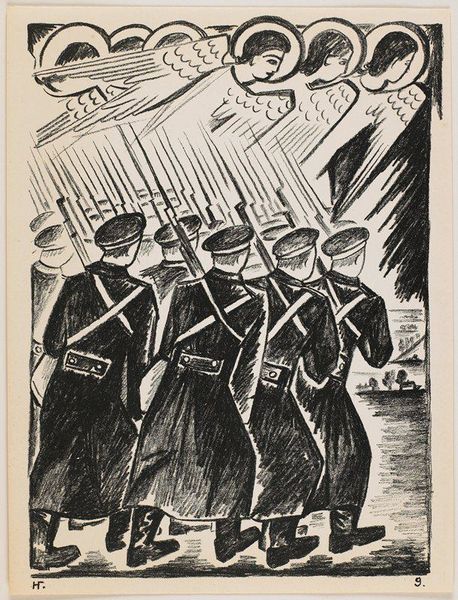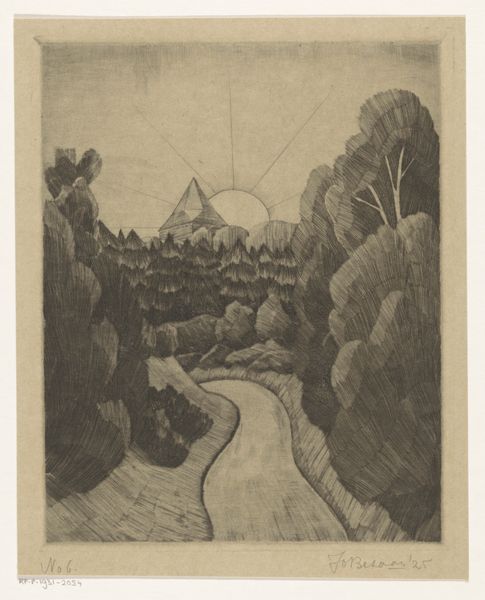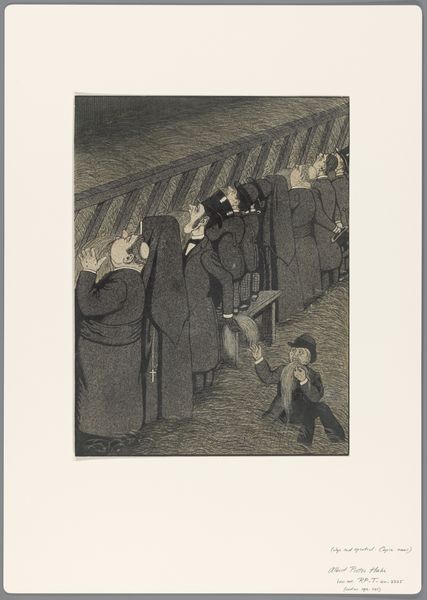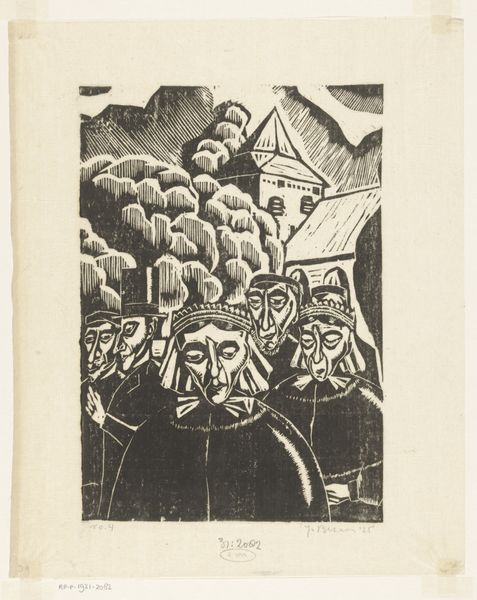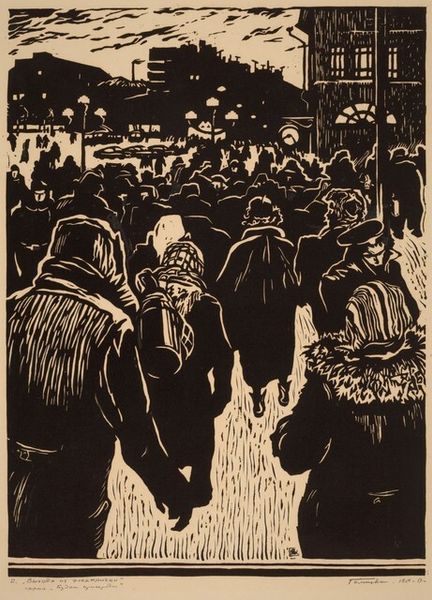
print, ink, woodcut
#
water colours
#
ink painting
# print
#
landscape
#
german-expressionism
#
figuration
#
ink
#
expressionism
#
woodcut
#
watercolor
Dimensions: sheet: 35.3 x 40 cm (13 7/8 x 15 3/4 in.) plate: 24 x 22 cm (9 7/16 x 8 11/16 in.)
Copyright: National Gallery of Art: CC0 1.0
Curator: Here we have Walter Gramatté’s 1916 woodcut, "The Burial," also known as "Begräbnis." The somber mood strikes me immediately. Editor: Indeed, the palette contributes significantly—muted greens and deep blacks punctuated by these searing crimson accents. It evokes a visceral sense of grief. Is this Great War imagery? Curator: Undoubtedly, its formal strategies are striking. Look at the bold, linear composition, the stark contrasts, how he uses a high horizon line to flatten the space, emphasizing the procession’s arduous climb. The crude technique amplifies the sentiment. Editor: Let’s not overlook the materiality—it’s a woodcut, after all. The very process of carving that block, the labor involved, feels aligned with the heavy subject matter, this long column of dark figures moving slowly up toward those red buildings. This process lends to the raw, unpolished nature of the print. What do you read from this choice of method? Curator: The inherent roughness of the woodcut undeniably echoes the rawness of the grief being depicted. Note how Gramatté forgoes subtle tonal gradations for sharp, decisive cuts. Editor: This isn’t some detached academic exercise; it’s physical. The starkness almost reflects the lack of proper mourning rituals in wartime - quick, almost furtive burials far from home and loved ones. Curator: That’s a salient point. Furthermore, consider the rhythmic repetition of figures as a design element. This pattern amplifies their collective burden. These figures are less individual characters than formalized expressions of despair. Editor: Precisely. I wonder about Gramatté’s intent in choosing a method demanding labor for reflecting the suffering involved in burial rituals; it speaks volumes about labor and loss. What he's choosing to leave out as well: individual portraiture gives way to the broader societal burden of the ongoing conflict. Curator: Ultimately, Gramatté masterfully manipulates form and composition to underscore the overwhelming emotional impact of the scene. The reduction to fundamental shapes becomes a tool for heightening emotive power. Editor: Indeed. Looking at this piece makes one ponder the process behind its creation: material considerations, in my view, truly enhance its thematic impact and speak volumes about human pain, and by extension, the human spirit to survive.
Comments
No comments
Be the first to comment and join the conversation on the ultimate creative platform.
